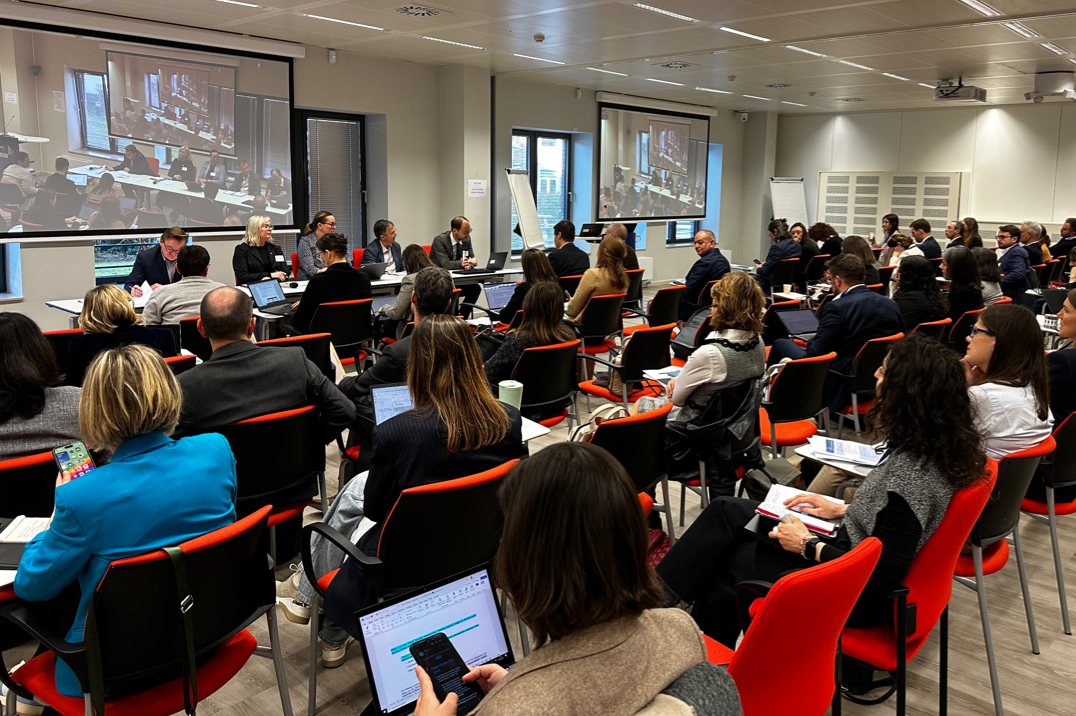As a part of the activities of Pillar 2 of the Talent Booster Mechanism, the OECD and DG REGIO hosted a policy seminar on 19 March in Brussels brining together stakeholders from the ten regions receiving technical assistance under Pillar 2, OECD experts, DG REGIO geographical units and regions involved in Pillar 1 work.
DG REGIO and OECD Policy Seminar: stock taking and peer-learning for regions adapting to demographic change
- 08 April 2025

Understanding the demographic challenge
Birth rates across the EU dropped to 1.38 in 2023, below the replacement level of 2.1, while life expectancy exceeds 80, leading to an aging population. Many young adults are emigrating from rural areas in search of better opportunities, causing labour shortages, declining innovation, and shrinking tax bases. Governments face fiscal pressure due to increased healthcare and pension demands, which could rise by nearly 4 percentage points of GDP by 2050.
The seminar proposed a two-pronged approach, where regions are adapting services and governance to demographic change, while improving quality of life to attract residents and investments, supported by evidence-based strategies.
Adapting land use and spatial planning to demographic change
Spatial planning that is sensitive to demographic shifts is essential to improve efficiency and the quality of built environments. Instead of expanding areas during population decline, regions benefit from renovating neighbourhoods and utilising existing infrastructure. Spain’s Castilla y León region’s REHABITARE and TUYA programs focus on housing renovation and affordable options for young people, supporting compact growth.
Bottom-up participatory planning fosters inclusive strategies. Despite challenges in technical capacity and policy coordination, effective collaboration between governments and communities proofs to be effective across Europe.
Adapting multi-level governance structures and subnational government finances to demographic change
As populations change, regional and local governments must rethink their operations. Shrinking rural populations require increased inter-municipal cooperation to maintain public services, while growing urban areas need likewise need more collaboration as they expand. An ageing population demands proactive health improvements to reduce fiscal pressure. Effective resource investment is crucial.
Regions like Spain's Castilla-La Mancha have adopted a cross-sectoral approach with measures such as tax incentives and entrepreneur support to address depopulation. In Portugal, Fundão attracted tech companies, creating over 1,000 skilled jobs. Romania's Nord Vest region invested in healthcare and is fostering digital innovation and a tech industry to combat demographic challenges.
Adapting service provision to demographic change
Maintaining quality public services amid demographic change requires innovation to ensure accessibility. As populations decline, providing healthcare, education, and essential services becomes more challenging and costly. Solutions like digital self-care platforms and on-demand rural transport aim to improve service efficiency.
The Azores is focusing on digitalisation, mobility, and proximity to ensure equal access. Italy's Campania is transforming healthcare through telemedicine and online consultations. Bulgaria's Yugoiztochen region is building a children’s hospital and attracting medical professionals from its diaspora to address a shortage of paediatricians.
Future Developments
The afternoon sessions comprised focused discussions with regional representatives of each region part of Pillar 2 of the TBM, to refine the preliminary policy recommendations developed by the OECD. The seminar concluded that while demographic transitions present significant difficulties, appropriate interventions involving coordination across governance levels and community participation can effectively address these issues.
More information:
